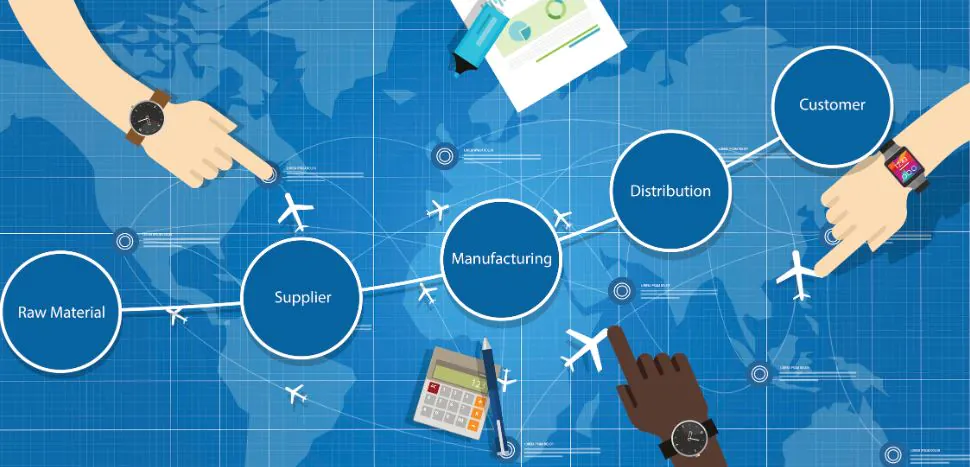There is a paradigm shift happening in healthcare. Innovative medical devices are at the forefront of this change and helping slowly deliver control of care away from the medical professionals and into the hands of their patients. We’re entering into a world where modern healthcare will soon become more accessible and completely digitized, which is helping to aid in this market-altering change. Innovative medical devices are making their way into homes and healthcare facilities that alter the quality, availability, and cost of care. The latest medical technology inventions have come so far, medical professionals are rethinking the way we approach healthcare.
As the healthcare industry is in the midst of many changes, innovative medical device companies see vast opportunities in a transforming industry. There are currently thousands of MedTech manufacturers and medical device companies, with new and innovative startups entering the market every year. According to BCC Research, the global medical device technologies market reached $458.3 billion in 2015 and will reach $634.5 billion by 2021, growing at a CAGR of 5.6% from 2016 to 2021.
What are innovative medical devices?
Innovative medical devices utilize some new technology that diagnoses, prevents, or treats a disease or other medical condition. The medical device can be as simple as your basic lab equipment or as complex as implantable products. Estimates from the World Health Organization suggest that there are 1.5 million different medical devices and over 10,000 types of generic device groups available globally. The Global Medical Devices Nomenclature (GMDN) Agency then classifies these into 16 product categories.
The FDA’s definition of a medical device is: “an instrument, apparatus, implement, machine, contrivance, implant, in vitro reagent, or other similar or related article, including a component part, or accessory which is:
- recognized in the official National Formulary, or the United States Pharmacopoeia, or any supplement to them,
- intended for use in the diagnosis of disease or other conditions, or in the cure, mitigation, treatment, or prevention of disease, in man or other animals, or
- intended to affect the structure or any function of the body of man or other animals, and which does not achieve its primary intended purposes through chemical action within or on the body of man or other animals and which is not dependent upon being metabolized for the achievement of any of its primary intended purposes.”
Must Read: Top 15 Innovative Medical Devices Shaping the Medical Industry
How Are Innovative Medical Devices Classified?
The GMDN’s broadest classification system consists of 20 categories, 16 of which are allocated to a medical device product based on device application, technology or common characteristic.
- Active implantable devices
- Anaesthetic and respiratory devices
- Dental devices
- Electromechanical medical devices
- Hospital hardware
- In vitro diagnostic devices
- Non-active implantable devices
- Ophthalmic and optical devices
- Reusable devices
- Single-use devices
- Assistive products for persons with disability
- Diagnostic and therapeutic radiation devices
- Complementary therapy devices
- Biological-derived devices
- Healthcare facility products and adaptations
- Laboratory equipment
What is Driving the Innovative Medical Device Market?
The expansion of technology into medical device manufacturing is causing the industry to skyrocket. MedTech is a new market segment with global revenues reaching $387 billion in 2016 and growing 16-18% YoY, with some sectors, like cardiology, growing at 35-40% YoY. Technological advancement is a key driver of innovative medical devices and has been for decades. MedTech advancements shorten the adoption curve for new technologies and the benefits of such are seen in the smoothening of workflow and ROI, as well as hospital’s ability to treat more patients.
Value-based care is another factor driving the medical device market. With his new fee model, healthcare providers are motivated to employ preventative healthcare rather than focus on expensive procedures. Medical devices greatly assist with this goal and also create new and profitable market opportunities. The low-tech device segment, including mobile applications and mobile devices, is one of the fastest growing segments that help to provide healthcare beyond hospitals. It may seem that value-based care would work against medical devices as this fee model does not reward high consumption, but instead, there is growing opportunity for innovative medical devices that offer preventative, therapeutic results and a competitive market advantage.
Mergers and acquisitions (M&A) is also a main driver for the innovative medical device market. There is a need for consolidation to meet the demands of consumers and private equity investors. M&A is a key strategy driving the medical device market that addresses healthcare industry changes and fosters stronger financial performance. Broader portfolio offerings, better therapeutic product solutions, and brand expansion are all underlying motivations of the recent M&A activity.
The aging global population is another major driver in this industry. Over the next 40 years, almost 20% of the population will be over 60, thus requiring more access to healthcare. And as life expectancies are increasing so is the demand for more innovative care and medical devices.
Also Read: Top 10 Medical Imaging Companies in the World
What are Barriers Affecting Innovative Medical Device Integration?
A major barrier to the adoption of innovative medical devices is the current healthcare culture. While there is a shift happening, fee-for-service is still the dominant model for all healthcare providers. Value-based care and the culture it imposes is becoming more popular, but until it is fully adopted, the use of new medical devices in healthcare facilities will continue to see a slow integration.
Research and development (R&D) is also lacking because of the current healthcare culture. Many investments are necessary to come up with new solutions for old problems and without a complete shift in culture, innovative medical devices won’t get the attention from investors it deserves.
Importance of Innovative Medical Devices in Healthcare
Developing innovative medical devices and equipment is crucial to making significant contributions to improving the health of people all around the world. These devices are creating opportunities. Even the smallest innovation like adhesive bandages, to more complex devices like implantables, or big data devices like electronic records systems, have big impacts on quality of care.
Medical technology is also an opportunity for companies to achieve greater agility, profit growth, and competitiveness. While new performance and value-focused businesses and operating models emerge, and digital and technological advances are converging, industry executives need to effectively navigate the operational changes that will be essential to success in a new healthcare environment.
Must Read: Top 10 Healthcare Industry Challenges and Solutions for 2018
New medical devices that utilize innovative medical technology will not only save more lives but eventually eradicate deadly diseases. Medical devices also help to improve the quality of life of people living with chronic diseases and chronic pain. The possibilities are endless and now more than ever healthcare needs to see a continued collaborative effort between healthcare professionals and I.T professionals.
BizVibe connects buyers and suppliers from all over the world with the goal of helping B2B companies keep up with market demand. To help your cement or construction business stay at the peak of the industry, BizVibe provides unbeatable support when sourcing products and making deals with top innovative medical device suppliers. Experts expect the state of the innovative medical device market to remain promising for the foreseeable future, making now the perfect time to act.
Related Articles
Top 10 Pharmaceutical Companies in China
Top 10 Medical Equipment Companies in the US
Global Medical Tourism Trends: Gaining Popularity in 2018



